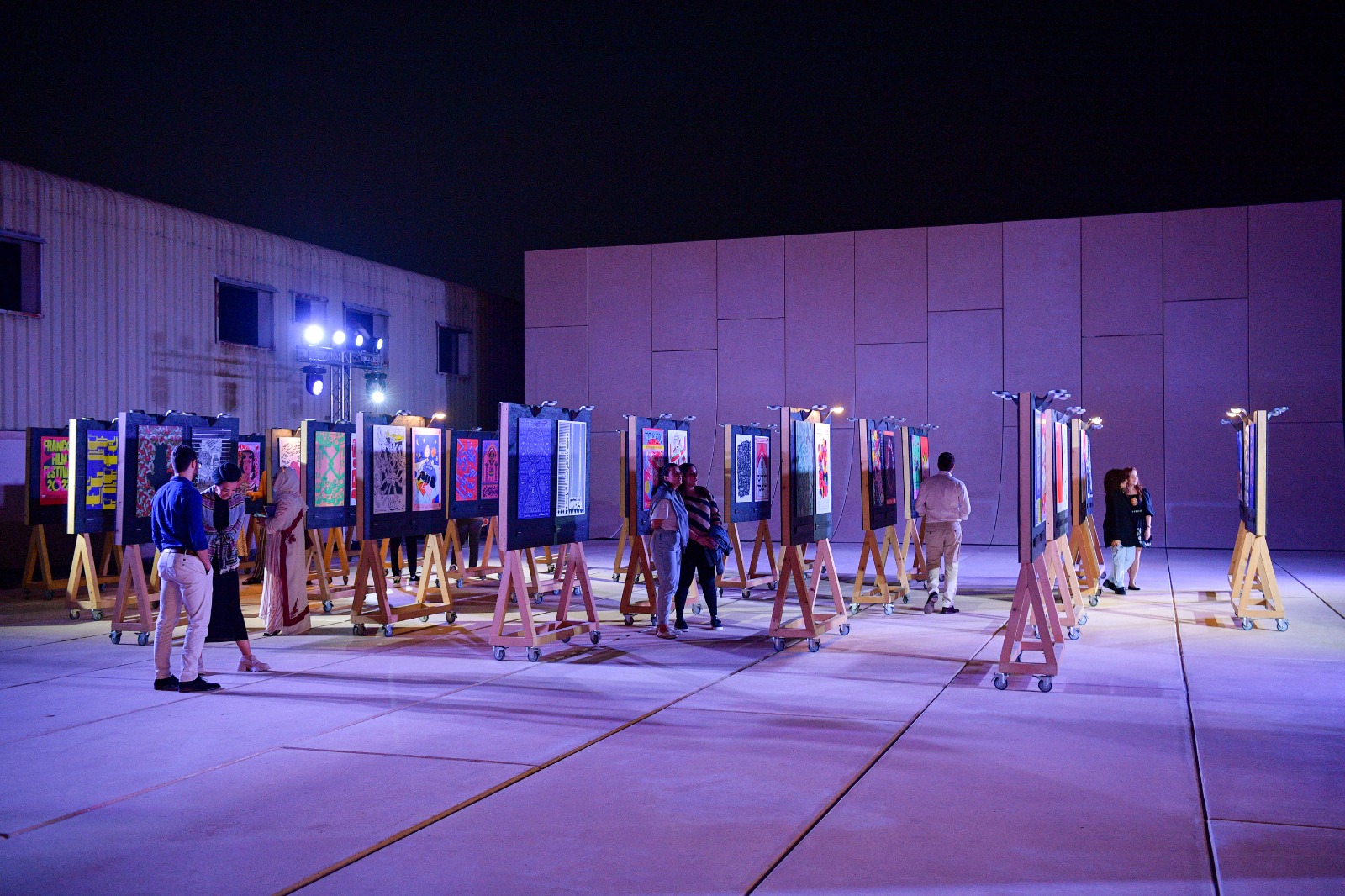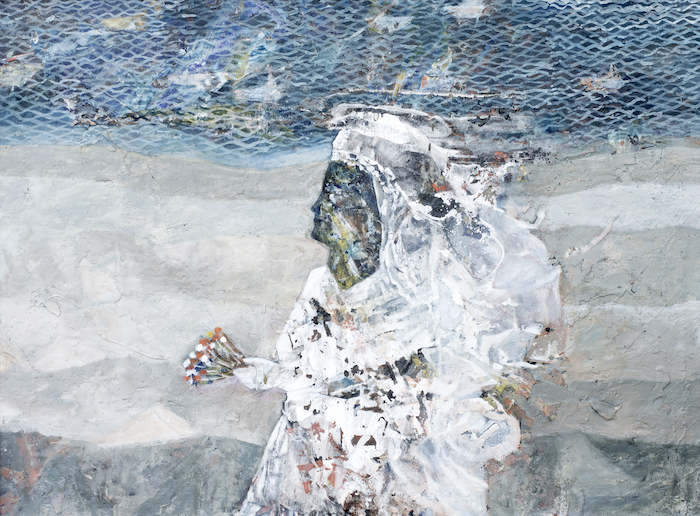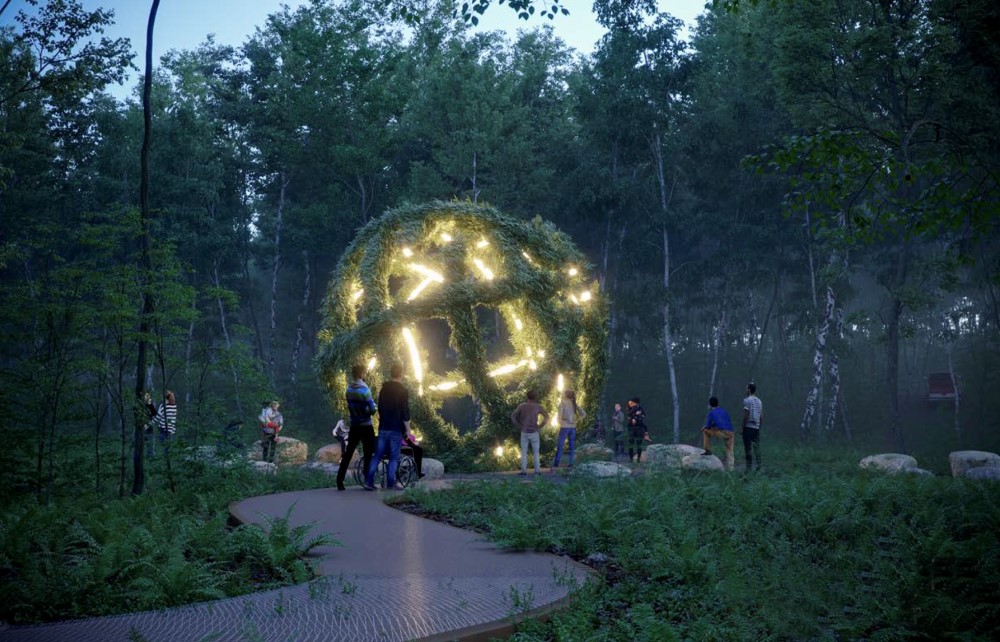This time, we are pleased to highlight Supernatural·Algorithm, the debut solo exhibition in the Middle East by Chinese artist Zhou Song, currently on view at Volery Gallery. The exhibition showcases Zhou’s latest body of work, which explores the intersections of nature, belief, and the digital age.
This is your first solo exhibition in the Middle East. Why did you choose the title Supernatural·Algorithm? What conceptual thinking lies behind it?
Zhou Song: The term supernatural here is not meant to evoke mysticism, but rather to suggest a new kind of nature, one that has been reshaped by technology. Algorithm, on the other hand, represents an invisible force that is penetrating our lives, perceptions, and even belief systems in unprecedented ways. This exhibition is an attempt to reweave the relationship between nature, technology, and faith. Through figurative yet estranged imagery, I want to guide viewers into a space that feels both familiar and unfamiliar, a mental realm where they can reflect on primal concepts now being redefined by algorithms.


Your exhibition features recurring motifs such as “anthropomorphic trees,” “pencil trees,” and “twisted candles.” What roles do these images play in your work?
These motifs form part of my visual-philosophical vocabulary. The anthropomorphic tree imagines the alienation of nature, it retains the structure of a tree while incorporating human features, symbolizing the future possibility of technology reshaping life forms. The pencil tree represents a more primordial nature, soft and quiet, but bearing traces of human civilization. After all, a pencil is itself a fusion of nature and culture. The twisted candle symbolizes how faith, under the governance of technology, struggles to find new forms of meaning. These elements are my artistic responses to the contemporary condition, and also visual expressions of my inner philosophical reflections.



This is your first exhibition in the Middle East, how do you understand the presentation of your work within this cultural context?
I don’t create work to cater to any specific cultural context, but I’m always aware of the potential for resonance across cultures. The Middle East has a deep spiritual and religious history, and my inquiry into the reconstruction of faith in the age of technology happens to intersect with a global concern. Regardless of cultural background, as algorithms and artificial intelligence intervene in our inner lives, we all face a shared question: where do we situate our core human values and belief systems?
At the same time, Middle Eastern culture has a rich tradition of spiritual symbolism and visual metaphor, which in some fundamental ways aligns with Chinese culture, particularly in our shared reverence for nature and the sacred. I see this exhibition as a kind of open-ended dialogue: I offer a field of images, and the audience enters with their own cultural experiences. Somewhere in between, we meet, through the work.


The exhibition presents a clear tension between the spirit of traditional Eastern landscape painting and the logic of modern Western digital culture. Was this cultural interplay intentionally constructed?
I’d say it’s a consciously natural presentation. My artistic growth has been deeply influenced by Chinese traditions and philosophy while also absorbing intellectual resources from the contemporary global discourse. The “emptiness” in Chinese landscape painting, the philosophy of stillness—they inherently contrast with the logic of today’s tech-driven world, which is built on quantification, simulation, and reconstruction. I’m not trying to resolve these contradictions. Rather, I allow the tension to remain in the work itself, so that it becomes part of the viewer’s visual and intellectual experience.

Your paintings are technically meticulous and realistic, yet they carry complex ideas and symbols. How do you find balance between technique and concept?
For me, realism is a language, a slow language that allows ideas to settle. I’ve always believed that form should serve content, and that strong form can carry meaning on its own. I like to use the most precise techniques to depict the most uncertain things, like the twisted candle or a distorted tree. These things appear visible, yet carry spiritual ambiguity. Concepts are not painted directly, they are provoked. Painting, to me, is a way of thinking.

As a Chinese artist working on the international stage, how do you approach the question of cultural identity? Do you think about how your origins might be interpreted through your work?
I value my identity as a Chinese artist, but I don’t want it to become a label or a decorative symbol. What I care more about is how, as an individual living in the present, I respond to the shared dilemmas of our time—technology, belief, existence, virtuality… These are global concerns. I don’t resist interpretations that come from an “Eastern” perspective, but I hope people can also see my work as a form of thinking and inner energy, not just cultural surface. I believe that truly vital art always begins with the personal, but it must ultimately reach others.

Holy Light, 110x80cm, Oil on Canvas, 2024
Can you describe your creative process—from the initial inspiration to the completion of a piece?
My creative process begins with producing a large number of drafts. I start by sketching ideas and exploring various compositions and concepts. The early stages involve intensive conceptual work and imaginative exploration—this is where much of my creative energy is focused. Once I have enough material, I move on to creating color studies, experimenting with mood, palette, and texture. From these creative drafts, I select the most resonant pieces to develop into final works
Art is life—or at least, the most important part of it

Which artists or art movements have influenced your work the most?
Both the philosophical tradition of Chinese painting and Western Surrealist artists such as Salvador Dalí and René Magritte have had a profound influence on my work. I am particularly drawn to the poetic, symbolic qualities of Chinese ink painting, as well as the dreamlike, uncanny imagery found in Surrealism. These influences have shaped my approach to visual storytelling, symbolism, and emotional resonance.
What are you working on now? How do you decide in which cities, art fairs, or galleries to show your work?
I am currently preparing for a solo exhibition at Aurora Museum in Shanghai this August. When choosing where to exhibit, I’m especially drawn to cities, art fairs, or galleries where I haven’t yet shown my work. I’m eager to explore new audiences and cultural settings, and I hope to share my art with people in different parts of the world.

About the Artist
Born in 1982, Zhou Song graduated from the prestigious Tianjin Academy of Fine Arts in China. From the very beginning of his career, he garnered national recognition, receiving multiple major awards for his graduation work and quickly embarking on the path of a professional artist. From his early Red Field series—visceral reflections on life and material desire—to his more recent philosophical investigations into post-human conditions, Zhou has consistently developed a highly distinctive visual language to construct a universe that is open, profound, and charged with tension.
His works have been collected by major collectors and international art institutions and he remains active on the global art stage. In 2017, he participated in the 11th Florence Biennale in Italy and was awarded the “Lorenzo il Magnifico” award in the ; installation category; in 2018, he was invited to the 3rd Robophilosophy Conference organized by the University of Vienna; In 2019, his works were featured in the 13th Havana Biennial in Cuba and the 13th International ARC Salon Exhibition, where he received Honorable Mentions in the Imaginative Realist Category, with the exhibition touring across Sotheby’s in Los Angeles, the Salmagundi Club in New York, and the MEAM Museum in Barcelona, Spain; In 2022, he held solo exhibitions at the Guardian Art Center in Beijing and HOW Art Museum in Shanghai, and was included in a collateral exhibition of the 59th Venice Biennale. In 2023, he presented solo exhibitions at the Osthaus Museum Hagen and the Bonn Contemporary Art Museum in Germany, with works also selected for the NordArt Exhibition. In 2024, he returned to the Powerlong Museum in Shanghai for a major solo exhibition.
As an artist deeply engaged in both painting and writing, Zhou Song stands out as a singular voice in contemporary Chinese art. Through his persistent inquiry into the self, image, and philosophy, he invites us to witness not only a profound contemplation of universal questions, but also the ongoing transformation and transcendence of Chinese contemporary art within an ever-shifting global context.
For more information, visit www.volerygallery.com and follow the artist on Instagram @zhousongstudio or explore his work at www.zhousongstudio.com.
Exhibition Information

Supernatural·Algorithm – Zhou Song Solo Exhibition
May 17, 2025 – June 17, 2025
Volery Gallery (Maze Tower, DIFC, Dubai)
By appointment only – www.volerygallery.com/reservations



